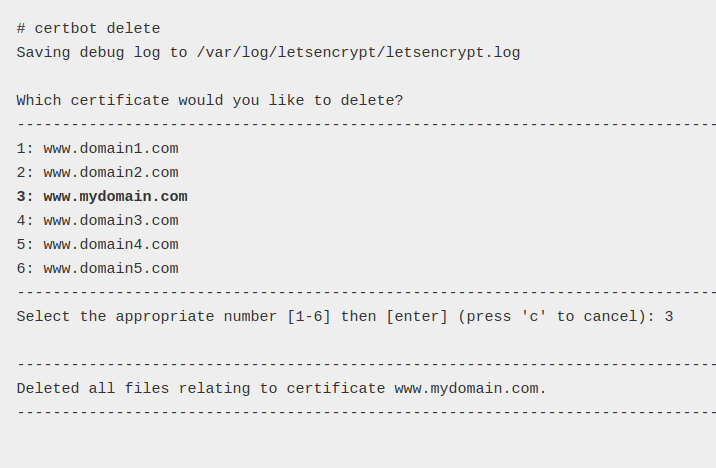Looking for a method of how Certbot remove a domain from the certificate?
Usually, we help our customers remove a certificate for domains that are not in use.
It’s quite simple to remove a certificate. We ensure to remove the complete certificate folder rather than the single certificate file.
So at Bobcares, we often receive requests to remove the domain SSL certificates, as a part of our Server Management Services.
Today, we’ll see how our Support Engineers do this.
What are Certbot and domain certificates?
Today, securing a website is a primary concern. And the best way to do this is to enable SSL for the domain. This digital certificate helps to secure websites.
Websites with control panels often find this easy via the GUI.
But is it that simple for a manually managed website?
This is where Certbot helps us. Certbot is a client that fetches certificates from CA (Certificate Authority) like Let’sencrypt. And thereby enables HTTPS for the websites.
Hence Certbot allows installation of SSL certificate for multiple domains. And allows managing the certs of these domains. Today, let’s see how we remove a certificate for a domain.
How Certbot remove a domain from the certificate?
Our Support Engineers often get requests to remove certificates. Let’s see how we do it.
Firstly, we take the backup of the Let’sencrypt certificates.
Next, we revoke the cert by specifying the path.
Meanwhile, there is an easy way to remove a certificate for a domain. That is, we use the command,
certbot delete
But only a root user or a sudo user can execute this command. For instance, the command lists the domains. And this appears as,

Finally, we enter the index number. Therefore the command automatically removes the certificate files.
On the other hand, we can also specify the domain name. Rather than specifying the index number. As a result, Certbot removes the domain from the certificate. We do this by running the command,
certbot delete --cert-name example.com
This helps in the easy removal of a domain from the certificate.
[Still having trouble to remove a domain from the certificate? – We’ll help you.]
Conclusion
In short, we saw how Certbot remove domain from certificate using a single command. Above all Certbots commands are useful in managing certificates of a server. Today, we saw how our Support Engineers do this.







Excellent! Exactly what I was looking for. Thank you!